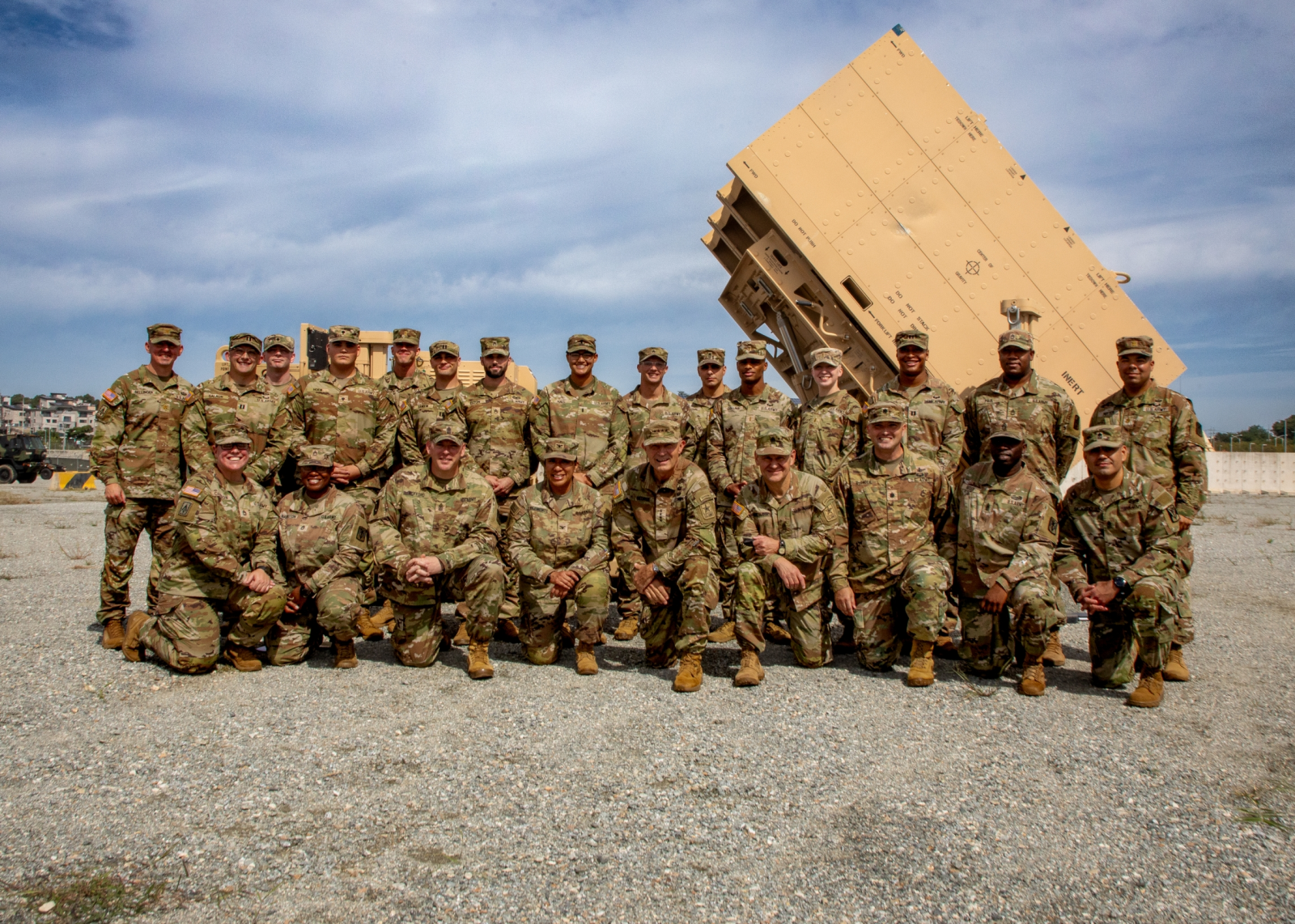By Ryan Chan
Copyright newsweek

Newly released photos show the United States has deployed an air defense system to protect its high-value military sites on the Korean Peninsula.
Regarding the deployment of the Indirect Fire Protection Capability (IFPC) system in South Korea, the U.S. Forces Korea told Newsweek in an emailed statement that it “continually adjusts its posture to maintain a robust defense against any threat.”
Newsweek has contacted the North Korean Embassy in Beijing for comment by email.
Why It Matters
South Korea is a U.S.-designated major non-NATO ally, where the U.S. has deployed about 28,500 troops, along with upgraded F-16 fighter aircraft and combat-proven air defense systems—the Patriot and the Terminal High Altitude Area Defense (THAAD).
U.S. Army Chief of Staff General Randy A. George, front row, middle, poses for a group photo in front of a launcher for the Indirect Fire Protection Capability system at a Patriot tactical site in South Korea on September 22, 2025.
What To Know
Photos released by the U.S. Army show Army Chief of Staff General Randy A. George inspecting “a Patriot tactical site” during his visit to South Korea on Monday. The site, whose exact location remains unknown, has deployed a launcher for the IFPC system.
Meanwhile, the South Korean newspaper The Korea Herald reported on Thursday that the American general was visiting Osan Air Base, 40 miles south of Seoul, marking the first time the IFPC system has been spotted at an overseas U.S. military facility.
According to a Congressional Research Service report, the IFPC system is a mobile, ground-based weapon designed to defeat low-altitude threats such as cruise missiles, unmanned aerial vehicles—also known as drones—rockets, artillery and mortars.
Consisting of a launcher and interceptors, the weapon is intended to protect “critical fixed- or semi-fixed assets” by filling the defense gap between short-range systems and the long-range Patriot and THAAD hardware, the report said.
The IFPC system was likely deployed to reinforce the air defense of Osan Air Base, one of the locations in South Korea where the U.S. has stationed its Patriot system.
“We employ a range of advanced, layered capabilities on the peninsula to uphold our ironclad commitment to the defense of the ROK and to ensure we remain ready to protect both our homelands,” the U.S. Forces Korea said in a statement on Thursday.
While North Korean leader Kim Jong Un has reiterated that his country’s nuclear status is irreversible, he claimed that if the U.S. dropped its demand that North Korea give up its nuclear weapons, he would be open to reviving talks with President Donald Trump.
In addition to its nuclear and missile arsenals, North Korea has been developing other emerging weapons, including self-exploding attack drones that were heavily used in the war in Ukraine, in an attempt to overwhelm the U.S.-South Korea alliance’s defenses.
Washington and Seoul signed a defense treaty in 1953 after hostilities in the Korean War ceased.
U.S. Army Chief of Staff General Randy A. George, left, meets with Army leaders and soldiers in front of a launcher for the Indirect Fire Protection Capability system at a Patriot tactical site in South Korea on September 22, 2025.
What People Are Saying
The U.S. Forces Korea told Newsweek on Thursday: “The U.S.-ROK [Republic of Korea] Alliance is modernizing to keep pace with a changing security environment, ensuring our combined posture credibly deters aggression from adversaries and addresses broader regional challenges.”
The Congressional Research Service commented in a report in January: “Protecting high-value military sites against enemy cruise missile, unmanned aerial system, and rocket, artillery, and mortar attacks has long been an important consideration in protecting military forces.”
What Happens Next
It remains to be seen whether the U.S. will deploy additional military hardware to South Korea while it pressures North Korea to return to denuclearization talks.



